Regular readers will know that besides being the region's ne plus ultra weather geek, UW meteorologist Cliff Mass takes a keen interest in our state's math performance. A few years ago, he and others went to court against the adoption of the Discovery Math series--and got a King County Superior Court judge to agree.
Now Mass is holding forth on his blog about a move to scrap "A-rated State math standards" in favor of a national set, Common Core State Standards, that Mass says just don't measure up:
What do our state education bureaucrats want to replace our new math standards with? Recently drafted, untested, and poorly written Common Core standards developed by a group sponsored by the National Governor's Association. These standards are also being pushed by the Gates Foundation and Obama's Secretary of Education, and about 40 states have signed on (some of whom are having second thoughts!).
Mass isn't the only one critical of Common Core, but regardless of where you stand on the content, the cost of adoption might bring you up short: "OSPI has estimated (in the report they submitted last week--a month after required by law!) that the switch to Core math and language standards would cost $192 million dollars...which I suspect is low," writes Mass. In December's special session, $51 million was cut from higher education, so a hundred million or two makes a big difference.
Don't freak out, but I have found someone who approves of both Ron Sims and Brightwater. Mark Hertsgaard has an article in Mother Jones, "Why Seattle Will Stay Dry When Your City Floods," and the hero of the piece is former King County Executive Ron Sims (currently HUD's Deputy Secretary).
I also approve of Ron Sims, I should say. I was among the tens of people who voted Sims for senator ('94) and governor ('04) because almost uniquely among politicians, he consistently takes the long view and tries to prepare for it.
Sims was for a progressive state income tax before it was cool to suggest it as a response to our stunning projected deficits. (That's also why he's not governor, so in retrospect he may have wanted to keep certain ideas under his hat.)
If Mark Hertsgaard is right, we'll have ample time to thank Sims for his service as King County Executive in the future. Hertsgaard is the author of HOT: Living Through the Next Fifty Years on Earth--he'll be in town on February 3, actually, for a talk at Town Hall. He's been covering climate change for the past 20 years, from different angles, like its effects on the wine industry.
His book lets him take a broader view: "Hertsgaard has traveled far, from Western Europe to Bangladesh, to Africa and China, and he has found clear evidence that the effects of climate change are already pervasive everywhere," says the San Francisco Chronicle review. Still, his book is tempered by an optimism born of faith in our adaptibility, and he singles out cutting edge responders: the Netherlands, yes, but also cities such as Chicago and Seattle. ...
Fig. 4 from the study published at PLoS One
Today in nerd city planning, we turn to this paper (thanks, Troy) on "Urban Scaling and Its Deviations: Revealing the Structure of Wealth, Innovation and Crime across Cities."
A research team consisting of Jose Lobo of Arizona State University, Deborah Strumsky of the University of North Carolina at Charlotte, Sante Fe Institute (SFI) Distinguished Professor Geoffrey West, and SFI External Professor Luis Bettencourt has been studying the advantages that accrue to cities, and in so doing, they have found that certain cities are much more like each other than neighbors close by:
These clusters do not generally correspond to geographic proximity, but reflect instead commonalities of economic choices and historical paths. Examples include the cluster containing San Francisco, San Jose, Minneapolis, Denver and Seattle as high-tech centers...
It's long been known that cities are hotbeds of something, you choose what. It's a statistical fact of population density, social interactions, and infrastructure. But what the researchers have been able to distinguish is a superlinear relationship between urban population and a number of key indicators: wealth, productivity, innovation, and crime. For every doubling of population, you get a bonus 15 percent increase in the latter.
That's interesting enough, but having a standard means you can find deviations. You can learn a lot from over- and under-performers, they say, most notably, that the dynamic contributing to that status is persistent over time. Simply adding or subtracting people doesn't create change, in itself. They offer the news that "apart from a relatively small bump in the late 1990s, the continued success of San Jose was already set well before the birth of Silicon Valley."...
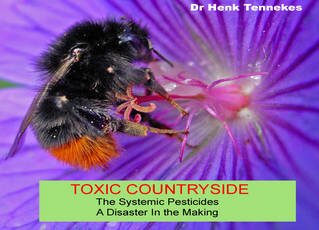 Earlier this week, I posted about the growing concern that Colony Collapse Disorder may be driven in part by bees' exposure to clothianidin. Clothianidin is part of a class of systemic pesticides known as neonicotinoids, and they have been used widely across U.S. agriculture since the early to mid-1990s. "Systemic" refers to the fact that the pesticide pervades the plant it's applied to entirely, and so any troublesome insect that takes a bite of any part, from root to leaf, will be poisoned.
Earlier this week, I posted about the growing concern that Colony Collapse Disorder may be driven in part by bees' exposure to clothianidin. Clothianidin is part of a class of systemic pesticides known as neonicotinoids, and they have been used widely across U.S. agriculture since the early to mid-1990s. "Systemic" refers to the fact that the pesticide pervades the plant it's applied to entirely, and so any troublesome insect that takes a bite of any part, from root to leaf, will be poisoned.
When bees began dying off in large numbers in Europe, the precautionary principle was employed and neonicotinoid use was restricted or banned. (With interesting bee-bounceback results.) In the U.S., where the EPA professes to have no conclusive reason to act, beekeepers have been left to enforce their own boycott.
A SunBreak reader alerted me to the work of Dutch toxicologist Henk Tennekes (not the climate change impact skeptic), and his research that concludes honey bees and birds can scarcely help being affected by neonicotinoids. "Improper" use of a pesticide is one thing, but his 72-page, heavily footnoted scientific treatise, A Disaster in the Making, demonstrates that this class of pesticides is unsafe in any hands.
"It is a serious ecological report rather than a book for general readers," warns the website, but a serious ecological report is exactly what is required. Tennekes explains in this podcast that neonicotinoids are persistent in the environment in two ways: first, they can be active for months in plants they're applied to, but more importantly, their neurological effects (a dérangement de tout les bee sens) may be irreversible.
Neonicotinoid insecticides act by causing virtually irreversible blockage of postsynaptic nicotinergic acetylcholine receptors (nAChRs) in the central nervous system of insects. The damage is cumulative, and with every exposure more receptors are blocked. In fact, there may not be a safe level of exposure....
(more)
First, how does "Environmental Dereliction Agency" sound? I feel like "Protection" is really giving people the wrong idea about the actual results of EPA regulation.
Second, I should warn you that if you continue reading, you'll be begin to wonder how we're all not dead yet. Thanks to Grist's Tom Philpott, I was just alerted to the leaked EPA documents that show the agency's fumbling approval of a broadly used, very toxic pesticide.
It's been on the market since 2003--bringing in $262 million in sales in 2009 alone says Philpott--but a key study on the pesticide's safety was not produced until 2007. And now, EPA scientists have in essence repudiated that study's findings, though EPA officials didn't think the public needed to know that.
A little while ago, I went to see a documentary about Colony Collapse Disorder (CCD), Colony, at the Northwest Film Forum. While it was really about beekeeping as a vanishing way of life, the film did track the efforts of David Mendes, the president of the American Beekeeping Federation, to lobby a German pesticide maker, Bayer, into researching more carefully the impact of their product Poncho (clothianidin). Mendes' fixation on pesticides was surprising to me because the word was that CCD was probably related to a fungus and viruses. (Mendes argues that if you poison people, we'll be more likely to pick up odd funguses and viruses, too.)
I have to admit, when I first heard Bayer, I thought it was odd the aspirin people were implicated in this, but of course they are a huge company, and crop sciences is another division. In any event, Mendes' interest in their pesticide Poncho becomes clearer once you know that it's absolutely clear that it's toxic to honey bees; the only question is, how would the bees be coming into contact with it?
Bees come into contact with a lot: a study on pesticide burden conducted across 23 states in 2007-08 found that:...
From August 8 to September 8, 2010, University of Washington scientists were tracking episodic tremor and slip (ETS), an unfelt "slow-motion earthquake" that released about as much energy as a 6.5 magnitude quake. (For more background on ETS, read "The Northwest is Earthquake Country.")
This year was different, in that they were using an array of arrays--a much larger system of data-gathering stations--to get a much more high-resolution "look" at what was going on underground. Previously, they had followed what seemed like the ETS's slow migration northward, from western Washington to Canada's Vancouver Island.
But the new data gleaned from eight arrays, each with 20 to 30 sensors, paint a much different picture. "The source of the tremor generates streaks that travel 60 miles per hour back and forth along a southwest-northeast track. Several hours of this activity produces what shows up as bands of tremor that steadily migrate northward at a much slower speed, about 6 miles per day," reports UW News.
Or, as they blogged from the field, on the Pacific Northwest Seismic Network, "After moving slightly to the northwest over the past few days the tremor seems to have moved back to near where it started or even slightly to the south. Uhmmm. What is going on here?" The "field" being the Olympic Peninsula and its spotty cellphone reception, servicing instrument sites without the aid of GPS to help find them (or signal to call to get picked up) required real outdoor skills. But no graduate students were lost--at least, not permanently--during the month-long tremor. ...
 Author Arne Christensen standing beside (not underneath) the Viaduct
Author Arne Christensen standing beside (not underneath) the Viaduct
As the 20th anniversary of the Loma Prieta earthquake came along last year, I realized there wasn’t much being done online to remember the Nisqually earthquake, and I started a blog with the goal of collecting stories from people who went through it.
As the months went by and I looked at books and websites like the Pacific Northwest Seismic Network, I was surprised to read about the persistent wave of strong earthquakes that’s been hitting Washington and Oregon, from the infamous 1700 Cascadia subduction zone quake on up to today. So I took a broader approach to my project by assembling stories and pictures about the earthquakes, mostly from Seattle-area newspapers.
Here are some of those stories and pictures, presented chronologically, from 1700 to spring 1996. If the Nisqually quake and the numerous deadly quakes of 2010 haven’t awakened you to the Northwest’s considerable earthquake danger, perhaps this will.
1700: A 2005 article by Ruth S. Ludwin and others called “Serpent Spirit-Power Stories along the Seattle Fault” quoted one account in the Seattle Post-Intelligencer of Sunday, March 20, 1904:
When Seattle was first settled by the white people the Indians told of a great earthquake that had occurred some fifty years before. They related that the shocks were so severe that the earth opened up in great cracks and that their little mat and slab huts were shaken to the ground and there were great landslides.
The largest slide near Seattle was immediately south of West Point lighthouse. It is about a mile in extent and can be clearly seen at the present day. The lower bench of Kinnear Park slid at that time from the cliffshore, carrying giant fir trees that still stand on the slide. The Indians said that the mountains “momoked poh” (shot at each other), and roaring of the tidal waves was frightful....
(more)
Between 1920 and 1960, Seattle grew from a backwater lumber town to a major center of manufacturing, retail, and commerce. The numbers tell the tale. In 1920, the population of Seattle was 315,000. By 1960, the city was 557,000 strong.
The rapid population rise was no doubt fueled by the rise of the aerospace industry leading up to and through World War II. But it was also fueled by a growing national awareness that the Pacific Northwest was a beautiful place to live with abundant water and wonderful access to nature, and was a nice base of jobs with growth potential.
It’s hard to imagine what living in Seattle was like in those critical four decades. There was no freeway, for one thing, but also no Seattle Center or Space Needle or professional sports stadiums. The tallest building in the city during those years was the Smith Tower.
It’s hard to get a feeling of the physical appearance of the city at that time by looking downtown; the landscape has simply changed too much. And historic photos don’t give you a sense of how people lived.
A great way to get insight into the life and times of the average Seattleite during those years, and to get a nice view of how the city expanded at the same time, is to take a tour of residential architecture.
The SunBreak Historical Architecture Team has plotted out a three street tour of three distinct mid-century neighborhoods in North Seattle....
 NOT ACTUAL SIZE! (CDC/ Harvard University, Dr. Gary Alpert; Dr. Harold Harlan; Richard Pollack. Photo: Piotr Naskrecki)
NOT ACTUAL SIZE! (CDC/ Harvard University, Dr. Gary Alpert; Dr. Harold Harlan; Richard Pollack. Photo: Piotr Naskrecki)
Bed bug infestations aren't tracked, so no one's got a number for you, but consider that if they're here, they're going to "do well," as Hickok says. Bed bug reports in New York have shot to 10,000 in 2009, from just 500 in 2004. (At the moment, Bedbugger.com is reporting on an infestation in Google's New York offices, which is not the Google trend anyone wants to see.)
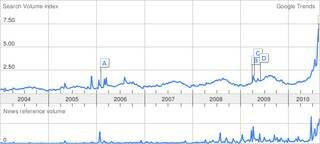 During a bed bug summit here a year ago, a representative from pest exterminator Terminix's Seattle branch said: "Two or three years ago, I'd be lucky to get one bedbug call in a month. Now in my branch alone, I may get two dozen." Again, that was a year ago.
During a bed bug summit here a year ago, a representative from pest exterminator Terminix's Seattle branch said: "Two or three years ago, I'd be lucky to get one bedbug call in a month. Now in my branch alone, I may get two dozen." Again, that was a year ago.
Maybe the best view we have of the infestation's progress is the Bed Bug Registry's citizen reporting. They have a page for bed bug incidents in Washington state, which shows the last two years' reports, and shows a habitat ranging from the Green Tortoise Hostel to the Edgewater Inn....
 Not all alcohol is created equal. Wine has more beneficial effects than, say, grain alcohol.
Not all alcohol is created equal. Wine has more beneficial effects than, say, grain alcohol.
"Why do heavy drinkers outlive nondrinkers?" is the title of the TIME magazine article (among others). The surprise result from a study published in the journal Alcoholism: Clinical and Experimental Research (which does not seem to be funded by Jack Daniels) is that the mortality rate for nondrinkers is even higher than heavy drinkers.
This is no flash-in-the-pan study, either; its 1,824 participants were tracked over two decades. (Caveat: 63 percent were men.) Participants were between 55 and 65, and the study controlled for "for nearly all imaginable variables--socioeconomic status, level of physical activity, number of close friends, quality of social support and so on," says TIME.
The study's author, Charles Holahan, researches "health psychology, with a specialization in stress and coping," which is a clue to what the answer to the puzzle may be, and how debilitating it is to miss out on socializing regularly.While no one's suggesting heavy drinking is good for you (69 and 60 percent of the study's nondrinkers and heavy drinkers died, respectively, but only 41 percent of moderate drinkers did), it may be that stress and lack of social interaction is worse for you than brain damage and increased cancer risks. (Moderate, by the way, is one to three drinks per day, so it's not a path of ruthless sacrifice.)
Coincidentally, the same day I heard about the study, El Gaucho Bellevue (City Center Plaza, 450 108th Ave. NE) emailed me about their new line of "medicinal" cocktails, four new drinks involving "ginseng, ginkgo biloba, St. John’s Wort, and skullcap." Says lead bartender Chris LeRoy, "With all the stress that people deal with these days, I thought I would take the trend a step further and combine it with the healing properties of natural herbs and tinctures." See? Stress!...
Bothell's Marina Biotech has sold the patent rights and technology it holds for the intranasal formulation of synthetic oxytocin analogue Carbetocin to Cypress Bioscience, reports the Puget Sound Business Journal.
Marina Biotech is now focusing on RNA interference technology, to control disease-causing protein expression; Carbetocin is arguably a better fit for Cypress, who work on the development of drugs that affect the central nervous system, and have a good record of bringing them to market speedily.
 Cypress is making an upfront payment of $750,000, with up to $27 million more tied to stages of successful drug development, with "single-digit royalties [going] to Marina Biotech based on commercial sales, if any," summarizes the news release.
Cypress is making an upfront payment of $750,000, with up to $27 million more tied to stages of successful drug development, with "single-digit royalties [going] to Marina Biotech based on commercial sales, if any," summarizes the news release.
What makes Carbetocin worth all this is a) Marina Biotech's intranasal delivery system, which has completed Phase I study, and b) the longer serum half-life of Carbetocin compared to oxytocin (it persists in the blood stream longer). There is also a c) which is potential upside to an oxytocin-based therapy for autism.
While the miracle-cure effects of oxytocin were trumpeted in the press earlier this year (ScienceDaily, Newsweek), like the early notion of the "serotonin deficit" accounting for depression, a simple "oxytocin deficit" hypothesis hasn't been borne out by studies [Modahl, et al, pdf]. (As a spectrum disorder, autism wouldn't necessarily be expected to have a single cause.) Recent studies have shown and not shown a link between the oxytocin receptor gene and autism.
Still, evidence is mounting that oxytocin has therapeutic effects: reducing social anxiety, promoting attention to faces, encouraging imitative behavior, inhibiting repetitive behaviors, helping strengthen emotional memory. Given that in one study, the researchers had to account for the effects of clonidine, Depakote, Tegretol, Dilantin, Ritalin, lithium, and Haldol on their study subjects' oxytocin levels, a therapeutic drug that's an analogue for a naturally occurring hormone is a bright moment in autism treatment, all by itself....
Seattle/LocalHealthGuide has a story on the intercontinental team who have discovered the genetic link to a form of muscular dystrophy. Their paper, published in Science, details how expression of the DUX4 homeobox gene by an otherwise harmless stretch of "junk DNA" results in facioscapulohumeral muscular dystrophy (FSHD).
They're hypothesizing that the DUX4 protein is at some level toxic to muscle cell development, which results in FSHD's "weakness and wasting" of muscles in the face, shoulders, and upper arms--which can later reach the abdomen and hips. Eventually, it could be possible to medically disrupt the protein-encoding process--but for now identifying the protein in a lab's controlled conditions and in the body are two very different things.
It's now possible, given this discovery, to determine via DNA testing if someone has FSHD before symptoms have begun to display. (Even pre-natally.)
Researchers from the Fred Hutchinson Cancer Research Center, the University of Washington (Daniel Miller), and the University of Rochester Medical Center collaborated with scientists in the Netherlands and Spain. Dr. Stephen Tapscott, from the Hutch's Division of Human Biology, was a co-author.
I spoke with Lauren Snider, from the Human Biology Division, about their lab's role. "Most of the work was done by the group in Netherlands, at Leiden University," she explained.
"We provided the technical refinements that allowed us to understand what transcripts are expressed." As you remember from biology, "Transcription is the first step leading to gene expression." (Not all of their research made it into the paper--some played more of a supporting role in delineating genetic possibilities, but that's science. There's a lot of ruling in and ruling out to do.)...
 Science! Is there anything it can't do? (Besides get Americans to take climate change seriously, I mean.)
Science! Is there anything it can't do? (Besides get Americans to take climate change seriously, I mean.)
There are so many beyond-space-age technologies at work in this latest news about the deathstalker scorpion (habitat: North Africa, Middle East) and its venom's possible role in cancer treatment that I hardly know where to begin. Gene therapy! Nanoparticles!
University of Washington researcher Miqin Zhang and colleagues have a paper published in ACS Nano (titled, thrillingly, "Chlorotoxin Labeled Magnetic Nanovectors for Targeted Gene Delivery to Glioma") that explains how they're using the scorpion venom's "active ingredient," chlorotoxin, to seek and destroy brain cancer cells.
On the list of cancers you do not want, brain cancer (glioma) is right up at the top. "Glioma accounts for 80 percent of brain tumors and currently remains one of the most lethal forms of cancers," begins Zhang's report. As an invasive, infiltrating growth, glioma doesn't hole up in one spot and sneer, "You'll never get me, doctors!" It gets everywhere, and then it kills you, painfully....
When I interviewed the UW's Steve Malone back in May, he was looking ahead to this summer's predicted episodic tremor and slip (ETS) event.
Now UW News says the seismic game is afoot once more:
The first ground motion associated with the event was recorded very early Sunday morning in an area north of Olympia and west of Tacoma. By Monday afternoon the signals were substantially stronger. If the event behaves like past occurrences, the source of the rumbling will move north through the Olympic Peninsula during the next week before crossing the Strait of Juan de Fuca to Canada's Vancouver Island.
The seismologists at the Pacific Northwest Seismic Network have installed a huge "array of arrays" (eight arrays with ten seismic recording stations) that should help them "see" downward into the earth and triangulate on where exactly the ETS is emanating from. As I learned in the May interview:
What fascinates seismologists is that this kind of ETS event, in its slow-motion way, unleashes energy equivalent to a 6.5 magnitude quake or greater. It just does it with such nuance that no one noticed until recently.
Nuanced or not, this time the seismologists are dialed in. Hopefully we will soon know a little more about ETS and any connection if may have to our much-anticipated Big One. Scientists still don't know exactly what is going on down there in the subduction zone--it's not clear if the tremor and slip is relieving stress, adding to it, or simply moving it around.
 Madison Park's beach is a prime source of Seattle's vitamin D intake.
Madison Park's beach is a prime source of Seattle's vitamin D intake.
Good news from the New York Times: "Given appropriate sun exposure in summer, it is possible to meet the body's yearlong need for vitamin D." Didn't know you could store up the D like a battery, did you? (Fun fact: it's actually a steroid hormone, not a true vitamin--if you get enough sun you don't need another source.)
The consulting physician on the article, Boston U's Dr. Michael Holick, suggests you take sun breaks "from 10 a.m. to 3 p.m. two or three times a week for 5 to 10 minutes." Put sunscreen only on your face, and--think Lady Gaga--maximize your skin exposure.
What's the big idea? Nutritionists have discovered that we aren't getting nearly the amount of vitamin D that we need. While a serious vitamin D deficiency has long been known to cause rickets, it's becoming more evident that chronic low levels of vitamin D can have serious health impacts as well.
Besides documented effects on bone health, Holick references studies that show a lack of vitamin D impacting multiple sclerosis, arthritis, type I diabetes, and immune response in general. Locally, the Fred Hutchinson Cancer Research Center has been researching vitamin D intake and colorectal cancer and breast cancer rates, and have also found that diet, geography, and lifestyle aren't good predictors of individual vitamin D levels; a blood test is the best way to be sure.
Here's the FHCRC line on vitamin D, what it does, how much you need, and how to get it....
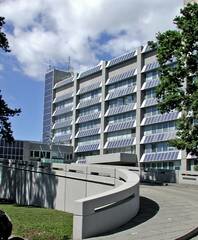 We are the Evergreen State, after all. David Bramer, of the U.W.'s Green Futures Research and Design Lab (GFL), is one of nine U.S. landscape architecture students selected to draft a sustainable landscape for the U.S. Mission to the United Nations in Geneva, Switzerland.
We are the Evergreen State, after all. David Bramer, of the U.W.'s Green Futures Research and Design Lab (GFL), is one of nine U.S. landscape architecture students selected to draft a sustainable landscape for the U.S. Mission to the United Nations in Geneva, Switzerland.
The team will be joined by three Swiss students and will be overseen by three U.S. landscape architecture faculty. The project is a collaboration with the American Society of Landscape Architects (ASLA) to create a comprehensive, sustainable landscape design for the Mission building grounds. Here's the details:
The prominence of the Mission building in international Geneva and the fact that it is regularly visited by diplomats and political figures from around the world were factors when the U.S. State Department selected Geneva as its "Flagship Post for Energy and Sustainability." The building is the site of the installation of the largest solar energy project ever undertaken by the Department of State overseas and home to an innovative magnetic levitation (MaglevTM) chiller air conditioning system that runs a virtually friction-free compressor.Conserving the variety of plant and animal life is also a priority, and in 2009 the Mission became the first State Department facility to earn certification by the U.S. National Wildlife Federation as a Certified Wildlife Habitat. Seeking ways to further improve the sustainability of the building and grounds the Mission formed a Green Team which developed the concept with ASLA to recruit students for a collaborative sustainable design project. The students were selected by a committee which included representatives from ASLA and the Department of State. Applicants were required to be U.S. citizens and to submit a résumé; 400-word- statement of interest; faculty recommendations; and three samples of project work.
"I am very excited about this project, which will help reinforce the Mission’s reputation as the greenest US diplomatic building in Europe," said Ambassador Betty E. King, U.S. Permanent Representative to the United Nations in Geneva. "The efforts of this talented team of young landscape architects will not only help us make our environment more sustainable, but also provide our staff with an inspiring and healthy environment which we will enjoy for years to come."
...
The Geneva region is a major international center for conservation and the environment. The city is home to the European headquarters of the U.N. Environment Program, and to major organizations such as the World Meteorological Organization (WMO) and the Intergovernmental Panel on Climate Change (IPCC). Nearby Gland is the site of two of the world’s most important conservation organizations: the World Wide Fund for Nature (WWF) and the World Conservation Union (IUCN). During their stay in Geneva the students will also have an opportunity to visit some of these organizations, to meet with international diplomats, UN staff and NGOs, and to exchange ideas with major players in the environmental community in Switzerland.
Read the full press release here.
 Western pond turtle, about to pounce. (Photo: Ryan Hawk/Woodland Park Zoo)
Western pond turtle, about to pounce. (Photo: Ryan Hawk/Woodland Park Zoo)
If you are eaten by a Western pond turtle on the way home today, you will likely have the Woodland Park Zoo to blame. (The zoo, your insect-like size, and the fact that you commute home through a pond. If, on the other hand, you try to eat them, you may be a large-mouth bass or bullfrog.)
Western pond turtles (Emys marmorata) are an endangered species, so as part of a "head start" reintroduction program, biologists from Washington Department of Fish and Wildlife and Woodland Park Zoo are releasing 19 turtles into the vast wilderness that is Pierce County. 57 more will find themselves taking in the ponds of the Kitsap Peninsula.
It's all happening right about now, this very morning. But it began ten months ago, when the wee turtles hatched in the wild, and were gathered up to get a "head start" in the safer confines of Woodland Park Zoo. Now that they weigh in at about 2 ounces, they should be big enough to flee from hungry bullfrogs and large-mouth bass. And if not, hey, circle of life. Those bass didn't ask to be born with large mouths to feed.
Says the zoo:
Western pond turtles were once common from Baja California to Puget Sound, including the Columbia River Gorge. However, loss of habitat, disease and predation by non-native species such as bullfrogs decimated their numbers. They were on the verge of extinction in Washington in 1990, with only about 150 turtles left in the wild. Habitat degradation and disease were, and still are, problems, but the biggest threat to fragile baby turtles is the bullfrog. The state listed western pond turtles as endangered in 1993. ...
(more)
The New York Times seems delighted to dispel any remaining myths about the untouched natural beauty of Washington state. Just this week readers have learned that there's three times the amount of plutonium waste at Hanford as "thought," and that the Puget Sound's pH level is declining in part due to ocean acidification and the water is growing more corrosive. (Thanks. We'll be expecting a make-up "36 Hours in Seattle," soon.)
The Seattle Times goes straight to the pH-decline bottom line: the impact on the Puget Sound shellfish industry.
The Taylor Shellfish hatchery on Hood Canal's Dabob Bay had its first good year in several in 2009, but company spokesman Bill Dewey said he suspects that's merely because the winds cooperated, preventing acidified seawater from entering the relatively stable bay.
The company recently installed sophisticated pH monitors at its hatchery to determine when it's best to draw water off the surface, from way down deep—or not at all.
In an earlier story, from January this year, the Seattle Times looked at the cause-and-effects of ocean acidification in general. The world's oceans act as a carbon dioxide sink, claiming excess CO2 from the atmosphere, but CO2 dissolved in water creates a weak acid solution. It turns out that shellfish larvae, for one, are very sensitive to changes in pH.
The new study on the Puget Sound's ocean-acidification intake represents the work of researchers with NOAA, the University of Washington, and the state's Department of Ecology. (It's published in the latest issue of Estuarine, Coastal and Shelf Science.) The researchers make it clear that the Sound is struggling mightily with the human activity around it--the toxic pollution and "nutrient-rich" flows that are channeled into it, both killing off life and promoting algae blooms that...also kill off life....
Behavioral economist Dan Ariely brought a big crowd to a sold-out Town Hall appearance on Tuesday night. He was wearing a black, Nehru-collared shirt; jeans; and red sneakers, and the crowd seemed hipper as well, than you might get at a typical economist's talk.
His new book, The Upside of Irrationality, is just out, and both New York Times reviewers and NPR reporters have fastened upon his claim that we're less like the cerebral Spock of Star Trek fame and more like the "fallible, myopic, vindictive, emotional, biased Homer Simpson."
Out of context this isn't news, because of course Spock was supposed to stand in contrast to humanity, while Homer Simpson is the de facto everyman. What Ariely is challenging, though, is that traditional economics is built on the fiction of a "rational" or "optimizing" actor, who in theory makes very Spock-like judgments on the basis on self-interested cost/benefit and utility analyses.
In other words, economists tend to think that everyone is just like them--or that enough people are--that it's close enough.
Ariely's adventures in behavioral economics, in contrast, provide a fundamental correction. It's rooted in the neuroscience of the last few decades, which has rewritten and resolved some old dichotomies. Joseph LeDoux's research into emotions and thought, for instance, that we're all emotionally driven, whether we're aware of it or not. Reason divorced from emotional impulse is simply the capacity to plot out decision trees, not to rate which one is preferable. The moment we evoke cognition, Ariely argues, people stop caring. Emotion propels us to action, not thinking.
Ariely had finished his last book, Predictably Irrational (Here's my recap of his 2008 Town Hall talk) just as the subprime meltdown was arriving. Finally, behavioral economics, which had been pooh-poohed as being too bottom-up to allow for strong theoretical claims, had an upset apple cart to stand on and shout from.
"I couldn't have hoped for a better marketing campaign," Ariely said. Those critics who said the stock market compensated for irrational behavior had some explaining to do. "All of a sudden we saw these things can actually have big consequences."
In that book, he focused a lot on the difference between social and market economies, and how adopting a pure market economics standpoint makes us, functionally, less human. (Whereas a pure social economy leads to Burning Man.) The thesis: "Social economy norms create more happiness than market economy norms."...
(via Seattle Weekly) The short answer--before you ask!--is that no, currently there's nothing all that practical you can do with a scramjet except watch it go really, really fast. Boeing's X-51A "Waverider" was purposefully blown up at the end of its test flight, in fact, because there's no way to land the thing. (Perhaps now is a good time to clarify that it's an unmanned vehicle.) Says Boeing's news release about the May 26, record-setting flight:
The X-51A was carried aloft under the left wing of an Air Force Flight Test Center B-52H Stratofortress that took off from Edwards Air Force Base. It was released while flying at approximately 50,000 feet over the Point Mugu Naval Air Warfare Center Sea Range.
Four seconds later, a solid rocket booster from a U.S. Army tactical missile accelerated the X-51A to about Mach 4.5 before it and a connecting interstage were jettisoned. The X-51A's engine ignited on a mix of ethylene and JP-7 jet fuel. After a short period, the X-51A ran exclusively on JP-7 jet fuel. The flight reached an altitude of about 70,000 feet and an approximate speed of Mach 5....
(more)
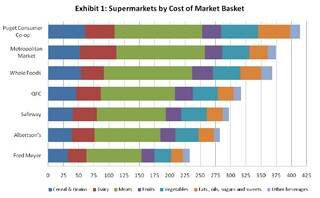 Courtesy University of Washington Center for Public Health Nutrition, "The Supermarket Gap"
Courtesy University of Washington Center for Public Health Nutrition, "The Supermarket Gap"
MSNBC has repackaged the results of the Seattle Obesity Study--by the University of Washington's Adam Drewnowski, who studies relationships between social class and obesity--to make it sound a little sexier, but in a way that also obscures the study's findings.
MSNBC's headline is "Pricey grocery stores attract skinniest shoppers," and the story contains a sidebar that lists grocery stores by customer obesity (a BMI of over 30): just 4 percent of Whole Foods customers are obese, followed by Met Market (8), PCC (12), QFC (17), Fred Meyer (22), Safeway (24), and Albertsons (38).
This is actually the opposite of what study wants to show you, which is that poverty drives the food choices that result in weight gain, not the stores you shop at.
The UW release says simply: "Obesity remains an economic issue." (And there's no photo of a slender blonde loading groceries into her SUV, there's bar graphs.) The study itself is titled, "The Supermarket Gap," and follows up on earlier research that found that "people who lived near supermarkets consumed more fresh produce and were less likely to be obese." Fine, everyone thought, we'll just build more supermarkets in so-called "food deserts" (places served only by convenience stores or fast food)....
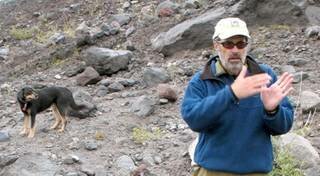 Steve Malone, on Mount St. Helens with Scooter the seismo-dog
Steve Malone, on Mount St. Helens with Scooter the seismo-dog
"The longer it's been since the last earthquake," said Steve Malone, brightly, "the sooner it is 'til the next one." We were in his office at the University of Washington--he's retired from full-time seismologizing, but still spends unpaid hours on campus answering questions from pesky bloggers, even if they're fueled by sensationalist speculation about more frequent quakes.
He refocused my question away from end-time paranoia toward common sense acceptance: "We have several of these faults: there's the Seattle Fault, and there's one down in the Tacoma basin, one up at Everett and Whidbey Island…so if you say, we've got eight or ten of these faults, even if the earthquakes go once every thousand years, you sum them up, you could have something every few hundred years of some consequence," explained Malone. "You don't know, it could be 500 years, or it could be tomorrow."
He also assured me that, incredible as it seems, it's perfectly plausible that the recent Baja quake could have generated waves at a Ballard pool. "Large earthquakes generate big surface waves, and big surface waves generate a bit of a tilt as they go through. If a body of water's natural free period happened to be the same as the frequency of those surface waves, then after a couple of cycles you might see it get built up enough," said Malone. "The motions of surface waves can be on the order of centimeters. We just don't feel it because it's very slow."
As an afterthought, he added: "The Denali quake of 2002--bigger than Baja [7.9] but further away--it generated a sloshing in Lake Union that damaged houseboats."
And because I had to ask: "Tunnels aren't usually an issue with earthquakes. The motion underground is less than on the surface, and they're already built to withstand the pressures of everything else."
As it turned out, we ended up talking across the breadth of Malone's career, covering volcanic earthquakes, megathrust quakes, and the mysterious Episodic Tremor and Slip (ETS). His interest in seismology developed in graduate school; he'd studied physics as undergraduate, but was not "keen on modern physics" and gravitated toward geology, then seismology. At first he enjoyed the outdoors aspects of the work, "particularly in the volcano world," but as his research progressed, he ended up in the office running computer models.
"Since I retired I get to go out and play," he said, smiling. "I volunteer for all sorts of fieldwork." He's been up on Mount Rainier working on an upgrade of instruments there, and out on the Olympic Peninsula conducting ETS studies in advance of the next appearance of the phenomenon.
"The ETS we have here are fairly regular, every 14 and a half months or so. The next one is scheduled--if you can call it that--for sometime mid-summer, maybe mid-August. We've got some experiments we're planning to gear up and get extra equipment in the ground for. There's some extra equipment out there now, running in background mode, but when the ETS arrives we'll double the equipment, trying to look ever closer at it."...
Sightline has a post up about "climate change denial," and how the U.S. is hip-deep in it: "nearly half the U.S. public now thinks that it’s impossible for carbon pollution to warm the Earth. That’s a gain of 20 percent since 2007 and more than at any point in the last 12 years."
What's the culprit? Well, how we talk about climate change can actually generate a psychological denial response, says Kari Marie Norgaard, a Whitman College sociologist. She tells Wired in a climate change Q&A that we're living in a developed world bubble. Wired recaps for you:
So we don’t want to believe climate change is happening, feel guilty that it is, and don’t know what to do about it? So we pretend it’s not a problem?
Sightline goes on to give more detail on what's happening in our heads, when we hear about glaciers vanishing here in the U.S., and order pizza:
The “problem narrative,” is filled with global gloom and doom scenarios. The “solutions narrative” often calls for small personal steps that can seem insignificant or ineffective. Combined, the two narratives literally cancel one another out......
(more)
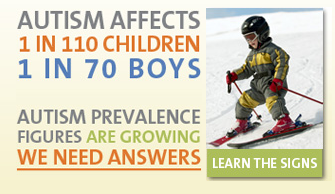 From the Autism Speaks website
From the Autism Speaks website
Sallie Tisdale has an article in Harper's (subscribers only) this month about her autistic daughter. There's an element of forestalled explanation to it; yes, she said "daughter."
My daughter, Annie, still lives with us. She is twenty-six now and at the moment is sitting on the porch, looking out at the street. Soon she will come in and pace for a while, her head down. Later she will read the first few pages of a book—the same book, the same pages, that she read last week and the week before, and will read again tomorrow.
"Autistic son" delivers 175,000 results on Google. "Autistic daughter," just 31,000. People are not sure why more boys than girls are found to have autism. Epidemiologically, the ratio is supposed to be about 3.6 boys to one girl.
It's known that girls can learn to mask some of the effects of autism more easily than boys, so it's possible that they are under-diagnosed in general. Studies show that hallmarks like "language deficits, tantrums, and aggression are all less common in girls than boys in the general population." A British researcher raises the specter of a shadow population of "shy" girls who like to keep lists and count calories (even to anorexia).
Tisdale's story is a primer on autism's variability, and its effects on everyone who struggles with it, including caregivers. Tisdale recounts the lifelong challenge of it: the official optimism with which her daughter was handed off as she finished school, the time her daughter started hallucinating and had to be given antipsychotic medication. Writes Tisdale:
Long-term studies of people with autism are not reassuring. Autistic adults generally read poorly, have few math skills. Very few go to college, are employed, or lead independent lives. The majority say they have no friends....
(more)
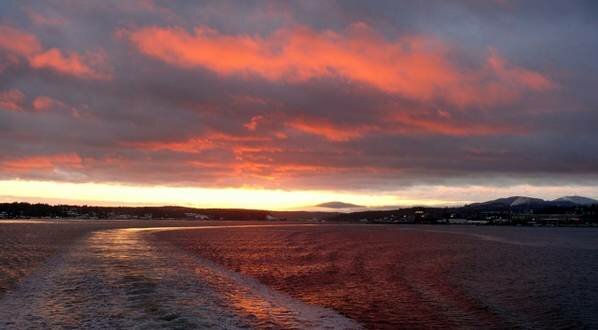 This photo has nothing to do with Sand Point.
This photo has nothing to do with Sand Point.
This just in over the e-wire: "In a letter sent today to U.S. Commerce Secretary Gary Locke and Under Secretary Jane Lubchenco, Mayor Mike McGinn and the Seattle City Council argued that consolidating NOAA’s operations in Seattle at existing federal facilities is the best option for NOAA to achieve its mission and the best deal for federal taxpayers."
(Note to the Mayor: My mother would prefer you went by Michael, at least on official documents.)
The Seattle sites up for NOAA grabs are the Western Regional Center at Sand Point and Federal Center South, both conspicuously not located in a floodplain. (Due to pressure from, well, everyone outside of Newport, OR, but specifically a protest from the Port of Bellingham, NOAA has had to go back and prove the necessity of leaving Seattle to build in Newport, which is in floodplain territory.)
There are real heavyweights involved here--NOAA provides employment for 1,200 people, directly and indirectly, and is said to pump about $180 million in economic activity into the area. That's why we're presented with the unusual sight of the International Association of Machinist Local 160 linking arms with the Laurelhurst Community Club.
NOAA's reassessment should finish up by the end of May 2010.
Hello!
Twitter: @thesunbreak | Facebook
iPhone app download (Free!)
Subscribe to The SunBreak
Delivery Options
![]() Subscribe to all SunBreak Stories
Subscribe to all SunBreak Stories
Daily Email Digest of The SunBreak
Most Viewed Stories
Latest Headlines
- Taproot Theatre's "The Oddyssey" Is a Thoughtful (and Traditional) Treatment of a Classic
- BREAKING: Intiman Theater Needs $500K By End of March to Keep Doors Open
- Zoo Gets in the Valentine's Day Spirit
- Choreographer Amy O'Neal Gives Us the Lowdown on "The Lowdown," Tonight at the Moore
- Town Hall Community Fund Wants to Subsidize Your Project
Recently in Our Flickr Photo Pool
www.flickr.com
|
Our Facebook Fan Page
Neighborhood Blog News
Niche Blog News
Seattle Weather
Get the SunBreak iPhone App

Download the SunBreak iPhone app for free.
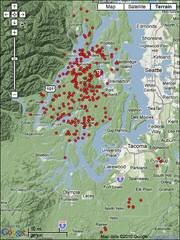



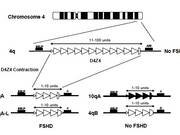
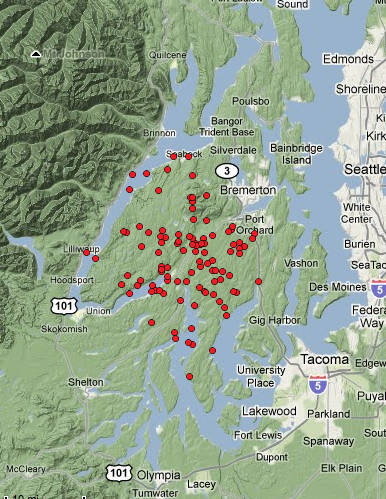
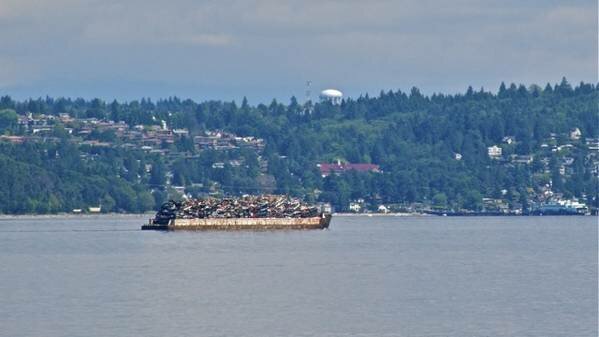
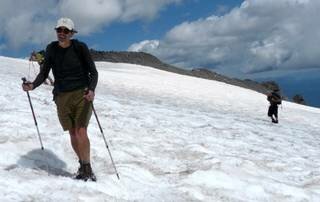

Most Recent Comments